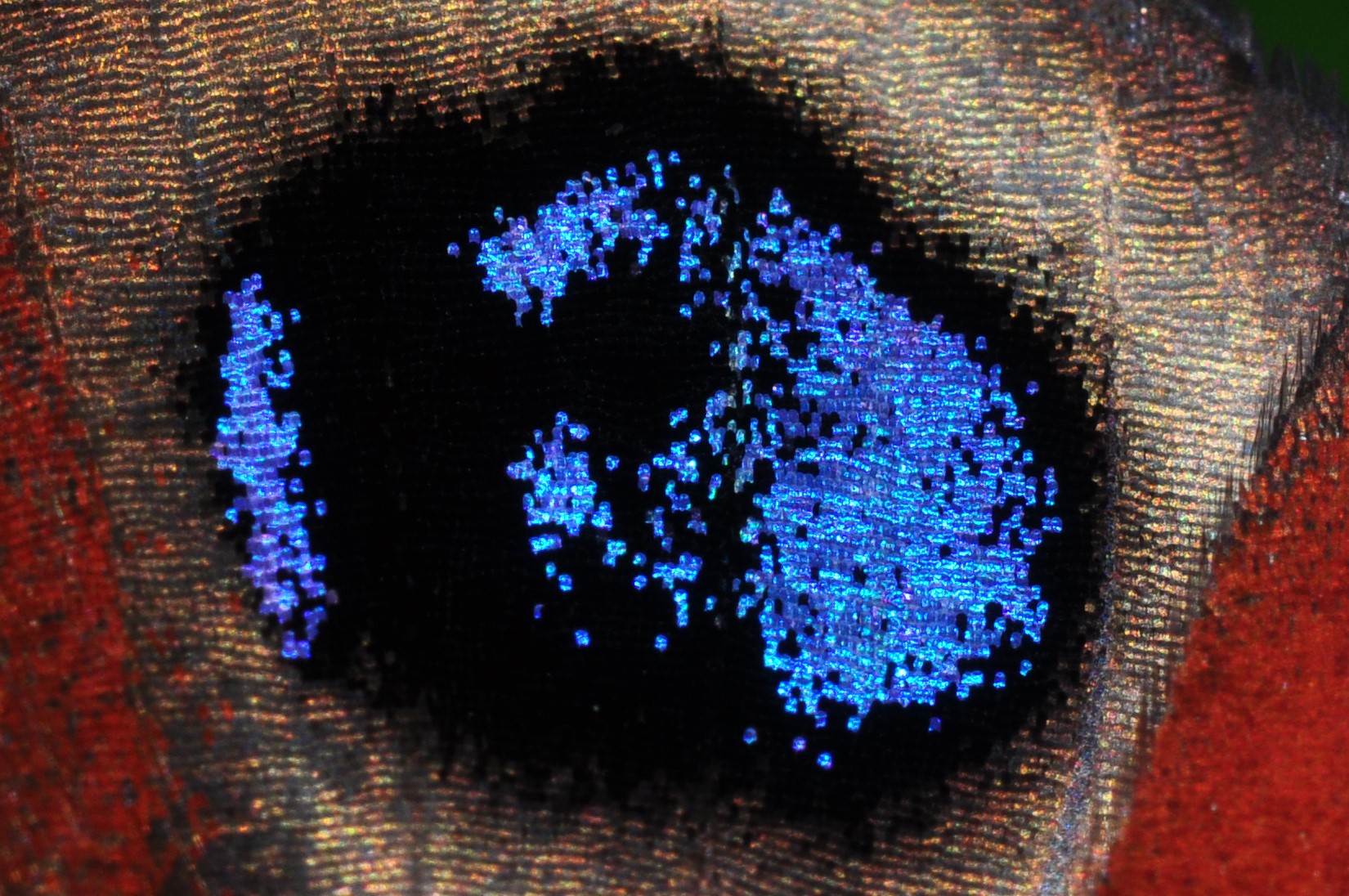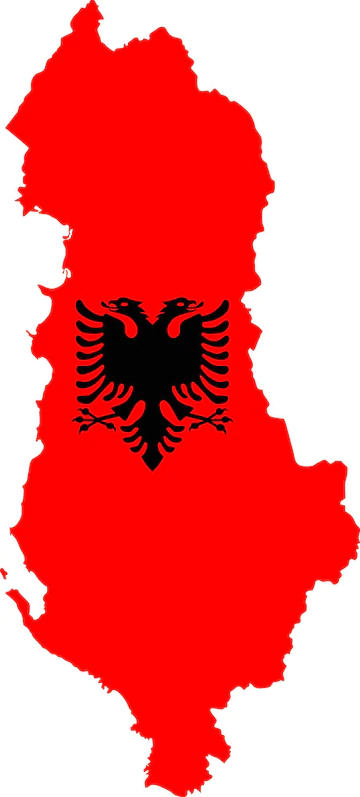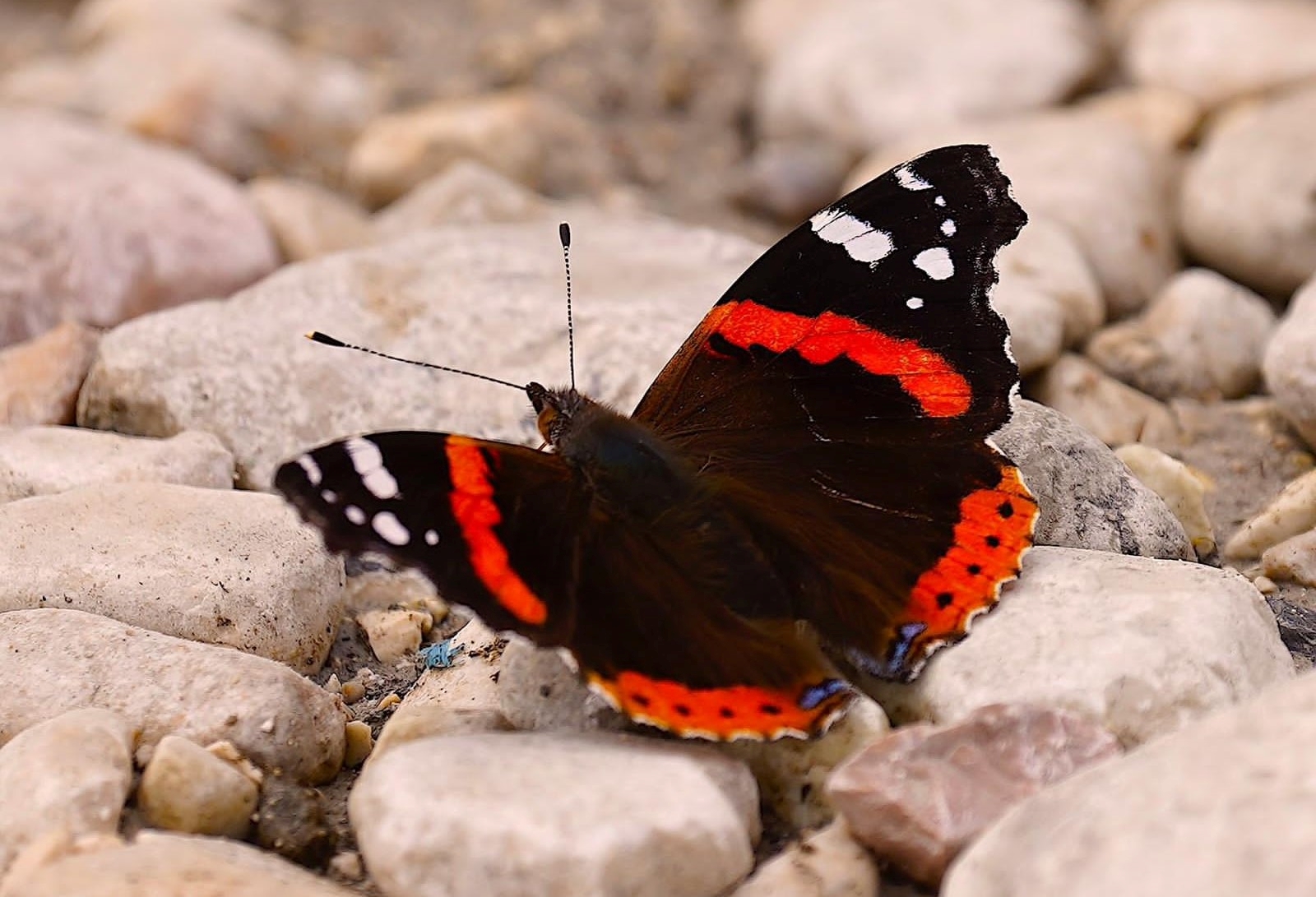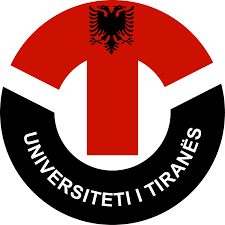| CFeS 2025(1) |
Editorial: A fluttering Beginning. |
|
| |
Paparisto Anila & Cuvelier Sylvain |
|
| |
CFeS 2025(1): 1 — DOI 10.5281/zenodo.15091543 |
|
| |
Welcome to the inaugural edition of Chronicles: Fluturat e Shqipërisë - Butterflies of Albania.
This publication is dedicated to exploring the vibrant world of Albanian butterflies - their habitats, behaviors, and the crucial role they play in our ecosystems. Published on a quadrimestral basis, each edition will offer fresh insights and discoveries. Whether you are a passionate lepidopterist, a nature enthusiast, or simply someone who appreciates beauty in its most delicate form, this is a space for you. |
|
|
| |
Fluturat e Shqipërisë Atlas 09.i.2025. |
|
| |
Cuvelier Sylvain & Paparisto Anila |
|
| |
CFeS 2025(1): 2-19 — DOI 10.5281/zenodo.14947890 |
|
| |
For many decades, research on the distribution of butterflies in Albania faced significant challenges due to the country's prolonged isolation. However, this situation has gradually improved, and in recent years, Albania's growing appeal as a tourist destination has opened new opportunities for entomological research.
To date, two atlases have been published, but in a country that was previously underexplored and is now experiencing more comprehensive study, these printed documents quickly become outdated upon publication.
A dynamic website with up-to-date data helps address this issue, though it remains essential to maintain a timestamp for each version in an official repository. The third version of the Atlas, which includes all observations up to 31.12.2024, is now available in the Zenodo repository, with plans for annual updates moving forward. This Atlas will also serve as the foundation for a new assessment of the Albanian Red List of butterflies. |
|
|
| |
Unlocking the secrets of Albania's endangered butterfly populations: a comprehensive review of Red Lists and strategic approaches for enhancing conservation efforts to better target species and priority areas. |
|
| |
Paparisto Anila & Cuvelier Sylvain |
|
| |
CFeS 2025(1): 20-24 — DOI 10.5281/zenodo.14885213 |
|
| |
This paper explores the significant evolution of three Red Lists for the Papilionoidea in Albania (2006, 2013, and 2022) in comparison to the latest status of the Fluturat e Shqipërisë Atlas (09.ii.2025).
This marked evolution underscores the need for effective species monitoring that minimizes bias and maximizes both the quantity and quality of data collected, moving beyond sole reliance on opportunistic field research by entomologists and biodiversity repositories such as Inaturalist and Observado. This need is particularly relevant as Albania rapidly develops into a Western-style, economically driven country, facing threats akin to those seen in new EU member states in past decades, which have experienced significant declines in butterfly populations and distribution.
Providing standardized and regularly updated status indicators is essential for guiding conservation efforts, enabling swift adaptation to emerging challenges in protecting endangered butterflies and their habitats. |
|
|
| CFeS 2025(2) |
Biodiversity, a tool and resource for supporting the development of regional management and sustainable development plans.
Case Study: The Superfamily Papilionoidea (Order Lepidoptera) in the Pogradec Region. |
|
| |
Qirinxhi Xhuliana, Paparisto Anila, Cuvelier Sylvain, Halimi Eltjon, Hysi Elena & Teneqexhi Nasiola |
|
| |
CFeS 2025(2): 25-29 — DOI 10.5281/zenodo.15758229 |
|
| |
Biodiversity is a key component of natural heritage, which should play an important role in the process of developing regional plans for sustainable management and development. This study focuses on the biodiversity of the Papilionoidea superfamily (Order Lepidoptera) in the Pogradec region and aims to show how the knowledge and distribution of species diversity can contribute to the development of policies and plans that support nature conservation and sustainable tourism. The Pogradec region, with an area of around 594 km², is an area of significant importance for biodiversity in Albania, where 132 butterfly species from 6 families, part of the Papilionoidea superfamily, have been historically identified.
New observations from 2024 confirmed the presence of 19 butterfly species, representing 14% of the historical data, including a new species, Thymelicus sylvestris (Poda, 1761). The number of species collected during this field trip is low compared to the biodiversity of the areas, as the trip was focused only on lower altitudes. The altitude at which the material was collected is a limiting factor for the range of species observed. We expect the number of species to be higher at higher altitudes, but this monitoring will be the focus of next year's study. Butterflies, as bio-indicators of the environment, help in identifying natural habitats and can serve as a reference point for the development of sustainable tourism. Observing butterflies as part of activities related to ecotourism can bring economic opportunities to local communities, contributing to sustainable development and the preservation of biodiversity. |
|
|
| |
Butterflies in the National Park "Alpet e Shqipërisë. |
|
| |
Paparisto Anila & Cuvelier Sylvain |
|
| |
CFeS 2025(2): 30-34 — DOI 10.5281/zenodo.15758328 |
|
| |
The Albanian Alps are a continuation of the Dinaric Mountains and extend to the north of Albania, to the west of Kosovo and to the south-east of Montenegro. These Alps extend to the valleys of the Ibri, covering a length of about 50 km. From an altitude of 500–600 m, they rise and reach over 2,000 m, being accompanied by the deep river valleys of Peja, Deçan and Erenik, with Drin as their southern border.
The National Park "Alpet e Shqipërisë" part of the Albania Alps, is one of the most important natural areas in Albania. It includes the highest peaks of the Albanian Alps, such as Maja e Jezercës, which reaches a height of 2,694 meters.
The park is a habitat rich in biodiversity, including about 1,200 species of plants, many of which are endemic, and the animal world is rich and diverse, over 200 species of birds and 50 species of mammals, including many species of mammals, birds, reptiles and amphibians. In this ecosystem we can find large, protected and rare mammals such as lynx, wild goat, roe deer and bear. Also, in the fresh waters of the alpine rivers lives the otter, a species that faces global danger.
The National Park of Albanian Alps is a protected area that was announced by the decision of the Council of Ministers no. 59, on January 26, 2022. This park includes the ecosystems known as "Valbona Valley" and "Theth Park", which have been declared as a national park (category II), as well as "Gashi Valley", which has the status of strict natural reserve (category I). In total, the Albanian Alps National Park covers an area of 82,844.65 hectares.
The park's geology is characterized by various rock formations, such as limestone, that create spectacular landscapes with high cliffs and deep valleys. Different climates, from alpine to Mediterranean, contribute to a diverse ecosystem that supports the existence of a wide range of species. This makes this natural park an object of study for scientists and ecologists, offering opportunities for research in conservation biology and climate change, as well as promoting sustainable tourism and nature protection.
Among the groups of fauna in the "Albanian Alps" National Park, Lepidoptera, or butterflies, constitute an important order of the class of Insects with an important impact on the park ecosystems. This park offers a diverse habitat with a different climate and landscape, which favours the diversity of insects in general and in particular of this order. Lepidoptera play an important role in the pollination of plants, helping in their reproduction and in the preservation of biodiversity. In addition to their ecological role, Lepidoptera are also indicators of environmental health. Their presence and their species composition can indicate changes in habitat and the impacts of climate change on biodiversity. The study of Lepidoptera in this park helps to monitor the ecosystem and provides valuable information for biodiversity management and conservation strategies. Thus, Lepidoptera contribute not only to the support of the ecosystem, but also to the preservation of nature in the Albanian Alps.
The valorisation of the composition of Lepidoptera (Papilionidae) species in the "Albanian Alps" National Park is important for the preservation of the biodiversity and natural wealth of this ecosystem. The presence of these insects indicates a healthy and balanced ecosystem, and the identification of different species of this order helps to assess the environmental condition. A rich Lepidoptera biodiversity is a good indicator for habitat conservation and can help develop strategies for sustainable park management.
In addition to their ecological role, butterflies have cultural and educational importance. These species offer opportunities for scientific research and environmental tourism activities, increasing interest in nature and caring for it. Education and awareness of the importance of butterflies can encourage visitors and local communities to engage in biodiversity conservation efforts. Thus, the valorisation of butterfly’s species not only contributes to the preservation of the park's natural wealth, but also promotes a sustainable culture and respect for nature. |
|
|
| |
Integrated bibliography of publications and online resources on Albanian Lepidoptera. |
|
| |
Cuvelier Sylvain & Paparisto Anila |
|
| |
CFeS 2025(2): 35-39 — DOI 10.5281/zenodo.15761299 |
|
| |
|
|
|
| |
Pelopidas thrax (Hübner, [1821]) (Lepidoptera: Hesperiidae), new to Albania, records and distribution update.
With first recorded sightings in Montenegro and Croatia. |
|
| |
Qirinxhi Xhuliana, Cuvelier Sylvain & Paparisto Anila |
|
| |
CFeS 2025(2): 40-44 — DOI 10.5281/zenodo.16814495 |
|
| |
In recent years, there has been a growing interest in the study and distributioin of butterflies, leading to the development of new distribution maps of butterflies in Albania.
The most recent studies confirm the presence of 207 butterfly species, however, field observations and documentation from 2024 have resulted in the recording of a new species, Pelopidas thrax (Hübner, [1821]), increasing the total to 208 confirmed species.
At the westernmost limit of its range in Europe, P. thrax has gradually expanded its range northward and further west, reaching continental Greece, the Ionian islands, and, most recently souther Albania with the first confirmed observation in Butrint National Park on May 25, 2024, and followed by further records during the autumn of 2024 and new sightings in the spring of 2025. These repeat observations, particularly across two consecutive in the same area, strongly suggest successful overwintering and local reproduction. This evidence indicates that P. thrax is no longer a sporadic visitor, but has established, several, likely isolated, breeding populatioins in Albania, becoming a naturalised component of the country's butterfly fauna.
Further supporting this rapid expansion is a confirmed sighting of P. thrax in Montenegro in September 2024, which represent the northernmost known locality for the species in Europe. This observation highlights the species' potential for continued northward spread along the Adriatic coastline. In 2025, the northward expansion was further supported by new observations in Montenegro and the first confirmed records from Croatia. |
|
|
| CFeS 2025(3) |
Where the sky touches the slopes: critical insights into the butterfly biodiversity of Tomorri Mountain. |
|
| |
Paparisto Anila & Cuvelier Sylvain |
|
| |
CFeS 2025(3): 45-49 — DOI 10.5281/zenodo.17847878 |
|
| |
The Tomorri Mountain in central Albania, with steep limestone ridges, forests, and high-altitude meadows, harbors a rich butterfly fauna. Elevations above 2,400 m create diverse habitats supporting both widespread and regionally rare species. Field surveys from 2017–2024 added five new species and confirmed 30 previously recorded, totaling 94 species across six families. Notably, Erebia gorge (Hübner, [1804]) was recorded at 14 sites, the only known southern Albanian locality, and Driopa mnemosyne (Linnaeus, 1758), a Near Threatened species, was reconfirmed. Thirteen species of national or global conservation concern, ten showing declining trends, emphasize the area’s ecological importance. Some historically reported species were absent, possibly due to data gaps or population declines. These results underscore the need for systematic long-term monitoring and targeted conservation to safeguard Tomorri’s unique butterfly assemblages. |
|
|
| |
Notes on the Regulatory Framework and Procedures for Scientific Research in Albania's Protected Areas. |
|
| |
Çobanaj Antonela, Paparisto Anila & Shuka Lulëzim |
|
| |
CFeS 2025(3): 50-53 — DOI 10.5281/zenodo.17848279 |
|
| |
Scientific research in protected areas plays a crucial role in understanding and conserving biodiversity, yet it requires a rigorous legal and administrative framework to ensure sustainable and responsible practices. In Albania, this framework is defined primarily by Law No. 81/2017 “On Protected Areas” and a set of accompanying Decisions of the Council of Ministers (DCMs). These regulate research activities, sampling procedures, access to biological materials, and mechanisms for benefit sharing. This paper provides a structured synthesis of the procedures and institutional responsibilities that govern scientific research within protected areas. It covers the approval of research activities (DCM No. 302/2019), the collection and use of biological materials and samples (DCM No. 127/2020), and the export of samples for genetic analysis (DCM No. 828/2021). By outlining application requirements, administrative review processes, monitoring obligations, and the legal provisions concerning the ownership and use of collected materials, the study offers a comprehensive overview of the national regulatory framework. The paper aims to support researchers, institutions, and environmental managers in navigating the procedural landscape for conducting compliant and ethically responsible research in the protected areas of Albania.Tomorri Mountain in central Albania. |
|
|
Chronicles Fluturat e Sqhipërisë.
https://zenodo.org/communities/cfes/
An open Access Journal, which permits use, distribution and reproduction in any medium, provided the original work is properly cited.
© 2025. Fluturat e Shqipërisë and the Editors. |
| |
|
|
 .
.

